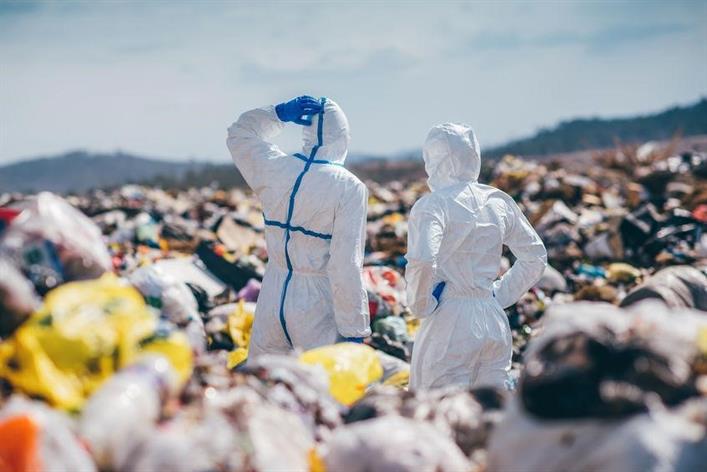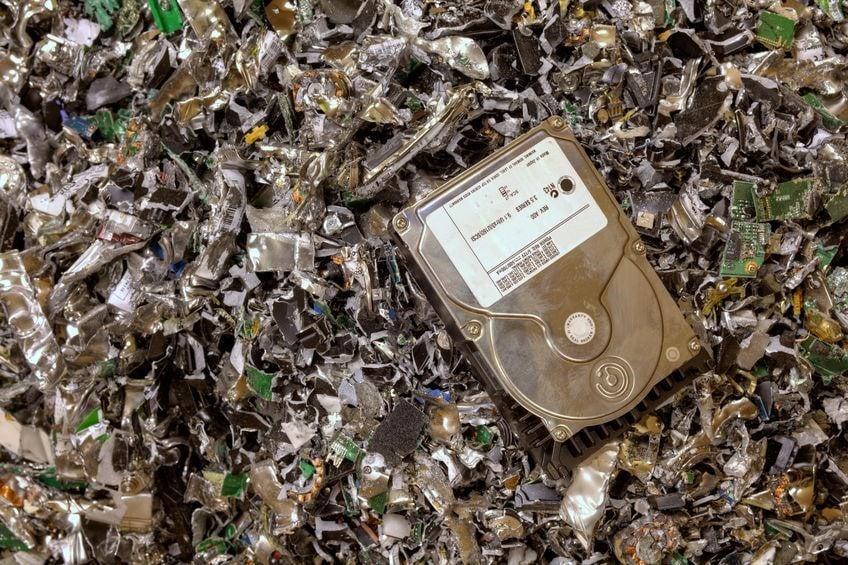28 Household Items That Don't Disintegrate In Landfills

How long do items in your home take to disintegrate in landfills?
Have you ever wondered what happens to the toothbrush or batteries we throw in the trash? We don't actively see the amount of waste we create daily. After leaving the waste transfer station or watching a dump truck pick up the trash bags at the end of our driveway, we never see the trash again. On average, the United States creates over four pounds of waste per person daily, earning us the distinction that generates the most waste. This is something we need to improve and work on together.
We're rapidly maxing out our landfills.
Corporate America is pushing everyone, businesses and individuals alike, to embrace greener practices. However, it seems more like a polite suggestion than any meaningful pressure to change. Recycling is still not practiced; landfills continue to fill up as we get closer to a full-on crisis. Even worse, most people don't consider donating used items to non-profits or charities as an option.
There are approximately 3,000 active landfills and over 10,000 old landfills (either full or decommissioned) in the United States. Sadly, we're on track to run out of room in landfills within 18 years. This is a true crisis; we want to share how we can stop this cycle and focus on green recycling.
We must focus on recyclable and biodegradable items.
One solution to limiting our junk output is to focus on donating, recycling, reusing, and upcycling.
Donating is an easy solution to get rid of junk. Many donation centers will gladly take lightly used items, from furniture to older appliances. We've picked up and donated mattresses, TV, desks, light fixtures, pianos, and more. Donating is also tied to a greater social good: helping others. You give your items a second home and allow someone else to benefit from them.
Another option is to buy and use biodegradable products. The EPA defines biodegradability as a substance that microorganisms can break down. If these products end up in a landfill, they will at least break down over time instead of occupying more space.
But many common household items aren't biodegradable.
Take a look at some of the most common household items and how long it takes for them to break down in a landfill:
Plastic/Food-Related Items
- Aluminum cans (8 to 200 years)
- Tin cans (50-100 years)
- Ziplock/grocery bags (1,000 years)
- Straws (400 years)
- Wrap (1,000 years)
- Bottles (10 to 1,000 years)
- Coated milk cartons (5 years)
- Six-pack plastic rings (up to 450 years)
Alternatives
- Use cans for crafts with kids
- Rubber, silicone, or mesh reusable bags
- Metal or rubber straws
- Bees wax food wrap
- Reusable and washable bottles
- Refillable glass bottle
- Glass bottle with cleaner tablets to refill
- Shampoo/conditioner bars
So much clothing gets thrown away.
Clothing
- Nylon (30 to 40 years)
- Cotton/thread (5 months)
- Leather shoes (25 to 50 years)
- Wool (3 months to 1 year)
- Rubber shoe soles (50 to 80 years)
Alternatives
- Organic cotton
- Linen
- Silk
- Hemp
- Bamboo material
Personal items
Common Personal Items
- Disposable diapers (500 years)
- Sanitary pads (250 to 800 years)
- Cigarette butts (18 months to 10 years)
- Dryer sheets (Most not biodegradable)
- Makeup remover wipes (100 years)
Alternatives
- Washable cloth
- Biodegradable pads
- Biodegradable & eco-friendly cigarette butts
- Wool balls can last more than 1,000 washes
- Reusable cotton rounds
Pro tip: Try refillable deodorant and biodegradable toothbrushes, floss, wipes, and band-aids.
Yard debris & other outdoor materials can take up to 500 years to break down
Yard Debris & More
- Tires (50 to 80 years)
- Painted/treated wood (13 years)
- Scrap metal (up to 500 years)
Alternatives
- Biodegradable tires
- Biodegradable paint
- Bring to scrap metal yard
Below are some alternatives for common miscellaneous items!
Miscellaneous Items
- Ink cartridges (500 to 1,000 years)
- Light bulbs (not biodegradable)
- Batteries (100 years)
- Aluminum foil (400 years)
- Styrofoam (not biodegradable)
- Glass bottles (not biodegradable)
- Fishing Line (500 years)
Alternatives
- Eco-friendly ink cartridges
- LEDs are the most biodegradable bulbs
- Batteries are rechargeable
- Brown parchment paper
- Biodegradable packing materials
- Reuse to limit consumption
- Biodegradable fishing line
There is so much more that ends up in landfills. We truly have not scratched the surface regarding the junk that winds up in our local landfills, negatively impacting our community and the environment. Luckily, The Junkluggers offers eco-friendly junk removal services to meet the needs of anyone looking to get rid of their unwanted goods.
From computers to furniture, The Junkluggers hauls it all!

We throw away so many electronics that leak harmful substances into the environment.
Many people dispose of their old computers or broken TVs at the local landfill because it's tough to recycle them. Although they contain different materials that can be recycled and reused, most appliances end up in landfills. Even worse are illegal landfills, which hold more than 40 percent of the waste worldwide. When these products go into a landfill, they leak toxic chemicals like lead or mercury into the surrounding soil.
The Junkluggers offers specialty e-waste recycling to help customers get rid of old computers, printers, monitors, and mobile phones- here's how to do that e-waste recycling. Donating and recycling these items increases access to reusable and refurbished equipment for those who need it.
Bulky items like furniture also find a final resting place in landfills because they're made from materials that aren't recyclable. Most furniture, for instance, contains treated wood that can't be recycled. It takes this type of wood years to decompose, and any synthetic fabrics from covers or cushions also take a long time to break down. A polyurethane seat cushion will take up to 1,000 years to decompose.
We need to get serious about donating, recycling and repurposing.
You might see something as trash, but often someone else can reuse that item. Donating is an important option, especially with larger items like furniture or appliances. It's a feel-good way to impact the environment and your local community. Many local charities are happy to take clothes, mattresses, appliances, building supplies, and lightly used furniture off your hands.
Recycling is also important, but it isn't easy. Verifying the correct recycling number on the bottom of a container, washing them out, and constantly wondering if something is recyclable make this environment-saving measure a chore. Most people toss things away instead of taking the extra time to recycle thoughtfully.
Although we are creating more eco-friendly groups and communities to focus on sustainable living, there's still a lot of work to be done. The first step toward this is more education — we need to help each other learn and grow to make progress. By being more conscious of what we throw away, we can keep landfill use down to a minimum — one step at a time.
